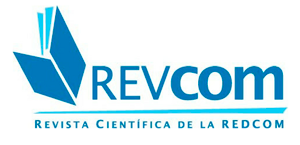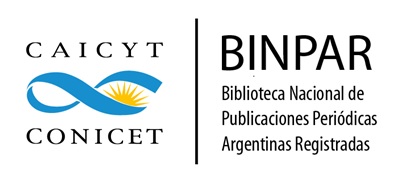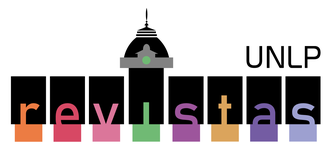Emerging Practices in News Consumption Among Young People
DOI:
https://doi.org/10.24215/24517836e086Keywords:
informative content, young adults, emerging practices, social mediaAbstract
This research aims to understand how young people navigate a predominantly digital informational environment, where access to information is constant and not always intentional. Using smartphones as their primary tool, they especially consume informative contents through social media and apps, leading to incidental exposure to news. In response, they have developed tracking and verification strategies, taking an active role to avoid misinformation. They prefer visual and audiovisual formats on platforms like TikTok and Instagram, which offer immediacy and accessibility. They consider influencers as trustworthy and reliable sources, especially on socially and politically relevant topics. In a context where algorithms both facilitate and limit their consumption experiences, young people are building new connective citizenships that redefine their forms of social participation.
Downloads
Metrics
References
Boczkowski, P. Mitchelstein, E. and Matassi, M. (2017). Incidental News: How Young People Consume News on Social Media [Noticias incidentales: cómo los jóvenes consumen noticias en las redes sociales]. En Critical and Ethical Studies of Digital and Social Media Minitrack. Universidad de San Andrés / Northwestern University in
Chicago-Scholar Space.
Boczkowski, P. (2022). Abundancia. La experiencia de vivir en un mundo pleno de información. UNSAM EDITA.
Bourdieu, P. (1988). La distinción. Criterios y bases sociales del gusto. Taurus.
De Certeau, M. (1996). La invención de lo cotidiano. I Artes de hacer. Universidad Iberoamericana.
Escobar, A. (1994). Welcome to Cyberia: Notes on the Anthropology of Cyberculture. Current Anthropology, 35(3). https://doi.org/10.1086/204266
García Canclini, N. (2023). Entrevista a Néstor García Canclini: hacer filosofía entre disciplinas diversas / Entrevistado por Clarisa Fernández, Ana Bugnone y Verónica Capasso. Sociohistórica, (51), e199. https://doi.org/
24215/18521606e199
Jenkins, H. (11 de febrero de 2009). If It Doesn't Spread, It's Dead (Part One): Media Viruses and Memes [Entrada de blog]. Pop Junctions. https://henryjenkins.org/2009/02/if_it_doesnt_spread_its_dead_p.html
Martín-Barbero, J. (1987). De los medios a las mediaciones. Comunicación, cultura y hegemonía. Gustavo Gili.
Miller, N. (1 de marzo de 2007). Minifesto for a New Age [Minifesto por una nueva era], Wired. https://www.wired.com/2007/03/snackminifesto/
Reguillo Cruz, R. (Coord.). (2010). Los jóvenes en México. Fondo de Cultura Económica / Consejo Nacional para la Cultura y las Artes (CONACULTA).
Salaverría, R., Bachmann, I. y Magallón Rosa, R. (2024). Desinformación y confianza en los medios: propuestas de actuación. index.comunicación, 14(2), 13-32. https://doi.org/10.62008/ixc/14/02Yconfi
Shifman, L. (2012). Anatomy of a YouTube meme [Anatomía de un meme de YouTube]. New Media & Society, 14(2). https://doi.org/10.1177/1461444811412160
Toledo, E., Comba, S. y Pamucio, L. (2022). Nada se pierde, todo se transforma. El consumo de noticias en medios tradicionales. En F. Albarello (Ed.), Mutaciones: hábitos de información y estudio de jóvenes en universidades argentinas. UNR Editora.
Downloads
Published
How to Cite
Issue
Section
License
Copyright (c) 2024 RevCom

This work is licensed under a Creative Commons Attribution-NonCommercial-ShareAlike 4.0 International License.
Politica vigente desde octubre de 2019
La aceptación del manuscrito por parte de la revista implica la cesión no exclusiva de los derechos patrimoniales de los/as autores/as en favor del editor, quien permite la reutilización, luego de su edición (postprint), bajo una Licencia Creative Commons Atribución-NoComercial-CompartirIgual 4.0 Internacional (CC BY-NC-SA 4.0)
Acorde a estos términos, el material se puede copiar y redistribuir en cualquier medio o formato siempre que a) se cite la autoría y la fuente original de su publicación (revista y URL de la obra), se brinde el acceso a la licencia y se indique si se realizaron cambios; b) no se utilice el material para fines comerciales.
La cesión de derechos no exclusivos implica que luego de su edición (postprint) en RevCom los/as autores/as pueden publicar su trabajo en cualquier idioma, medio y formato; en tales casos, se solicita que se consigne que el material fue publicado originalmente en esta revista.
Tal cesión supone, también, la autorización de los/as autores/as para que el trabajo sea cosechado por SEDICI, el repositorio institucional de la Universidad Nacional de La Plata, y sea difundido en las bases de datos que el equipo editorial considere adecuadas para incrementar la visibilidad de la publicación y de sus autores/as.
Asimismo, la revista incentiva a los/as autores/as para que luego de su publicación en Revcom depositen sus producciones en otros repositorios institucionales y temáticos, bajo el principio de que ofrecer a la sociedad la producción científica y académica sin restricciones contribuye a un mayor intercambio del conocimiento global.






.jpg)



.png)






















